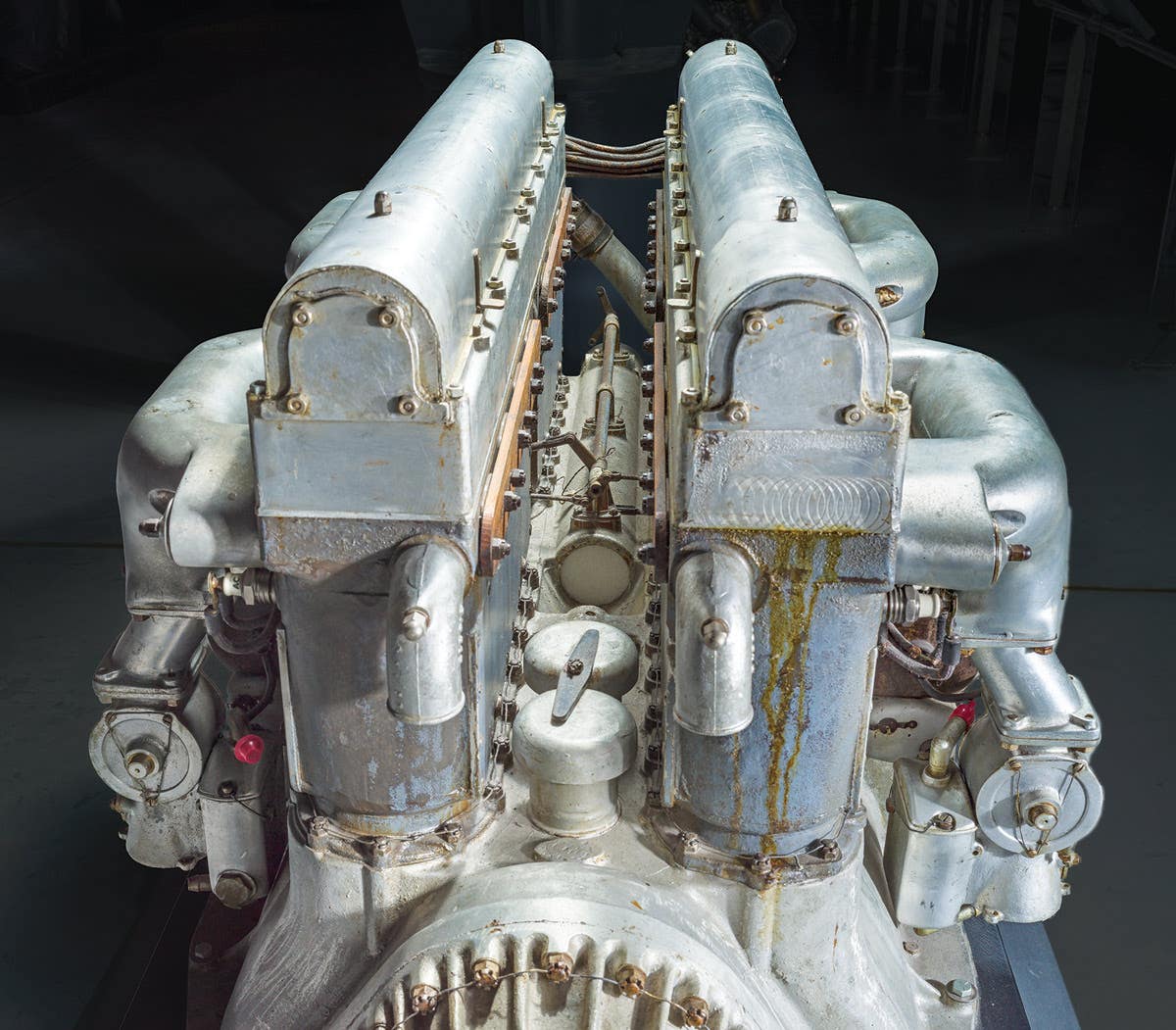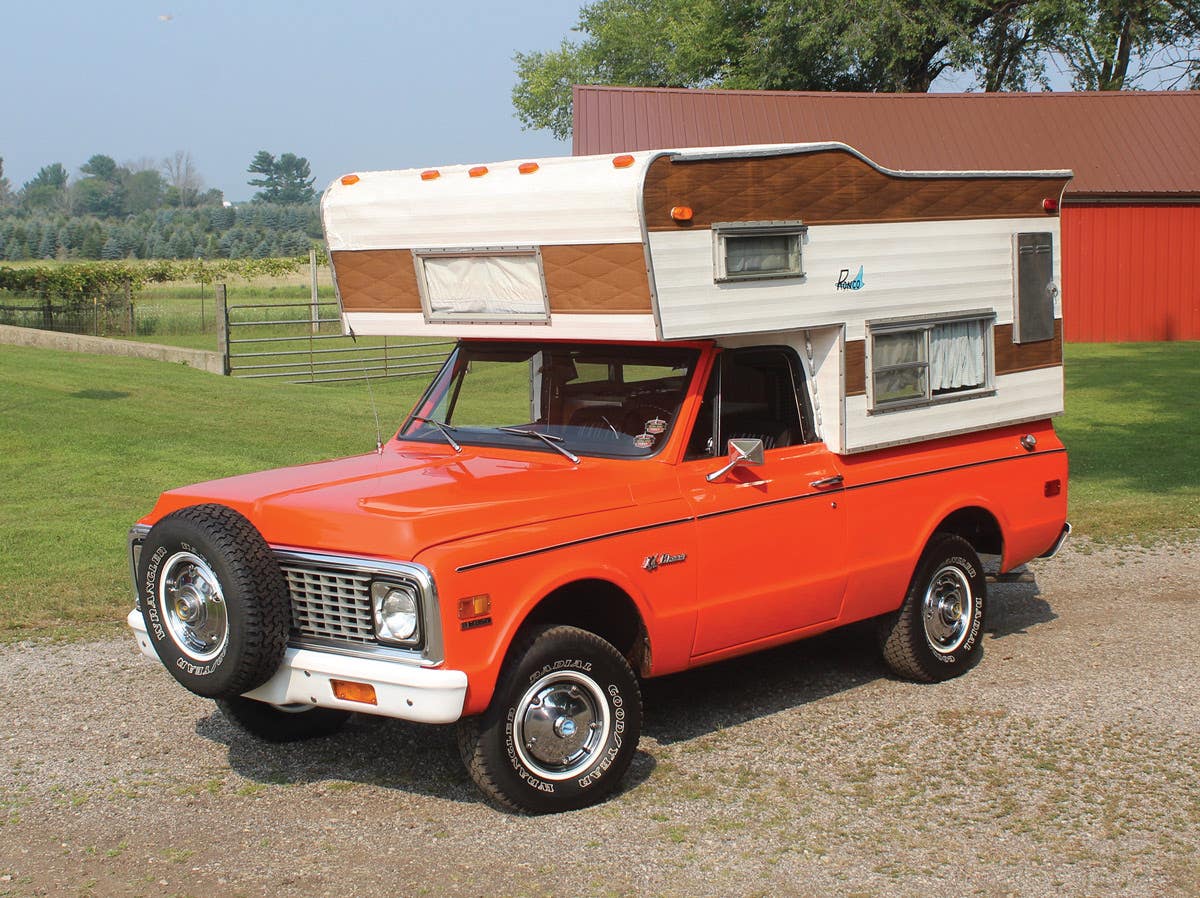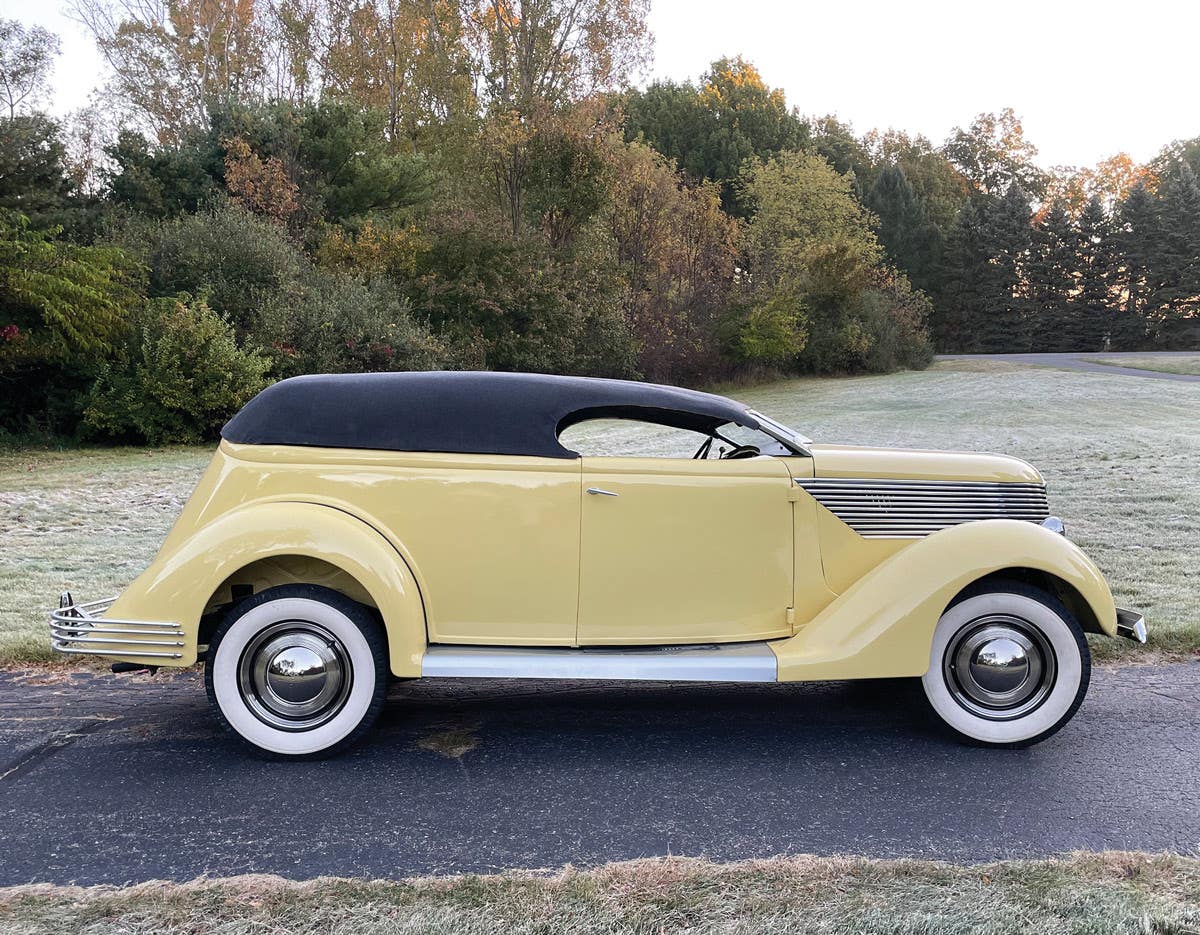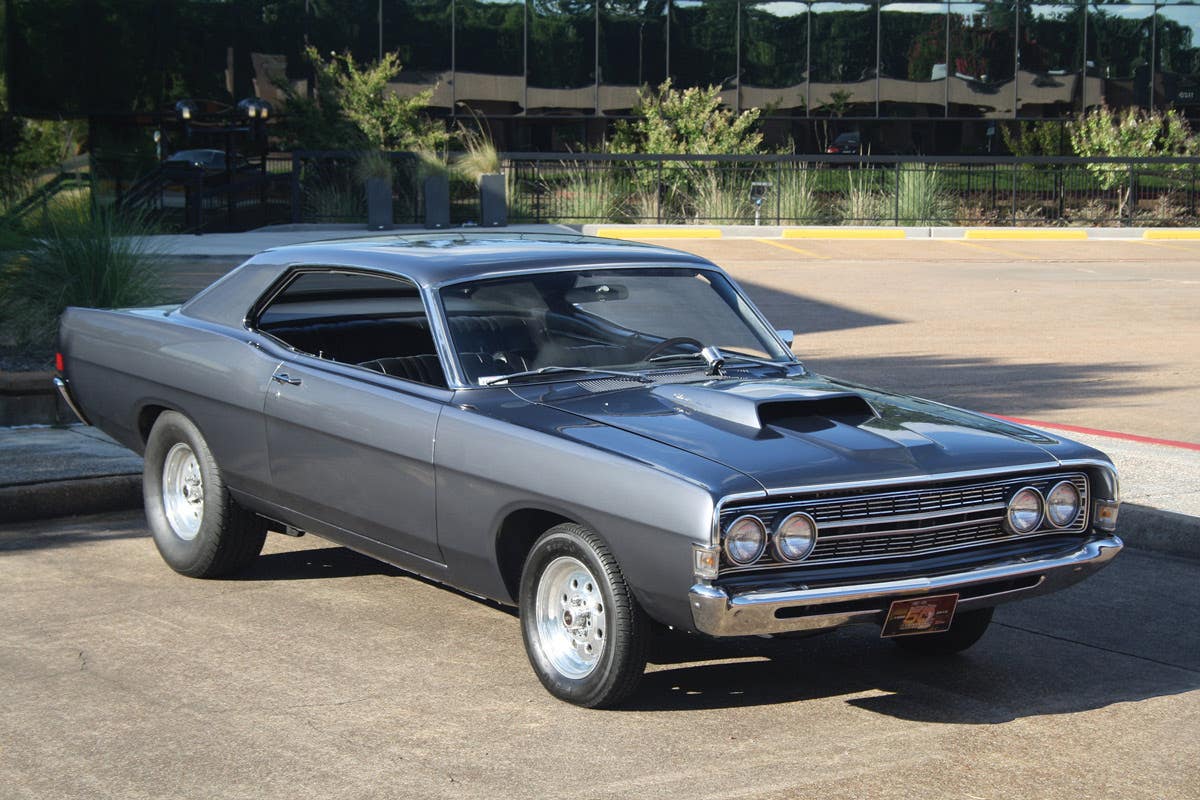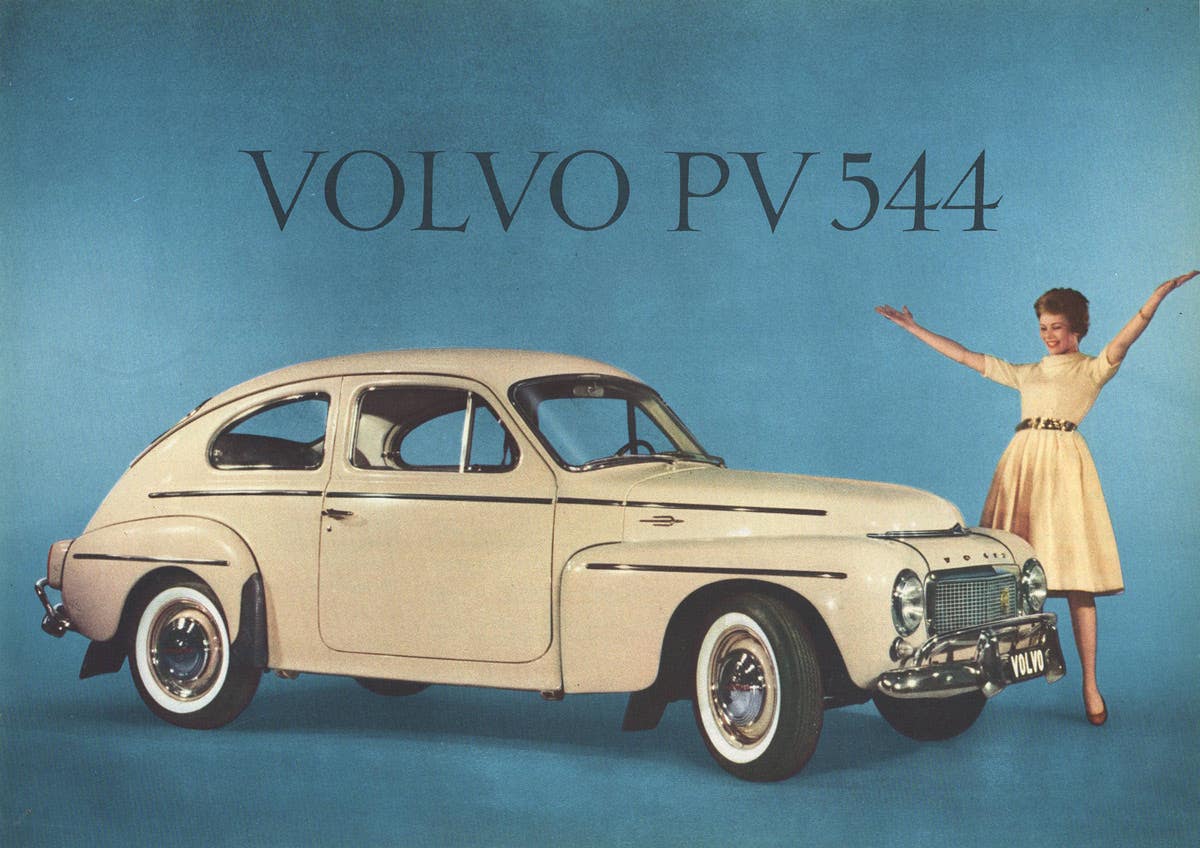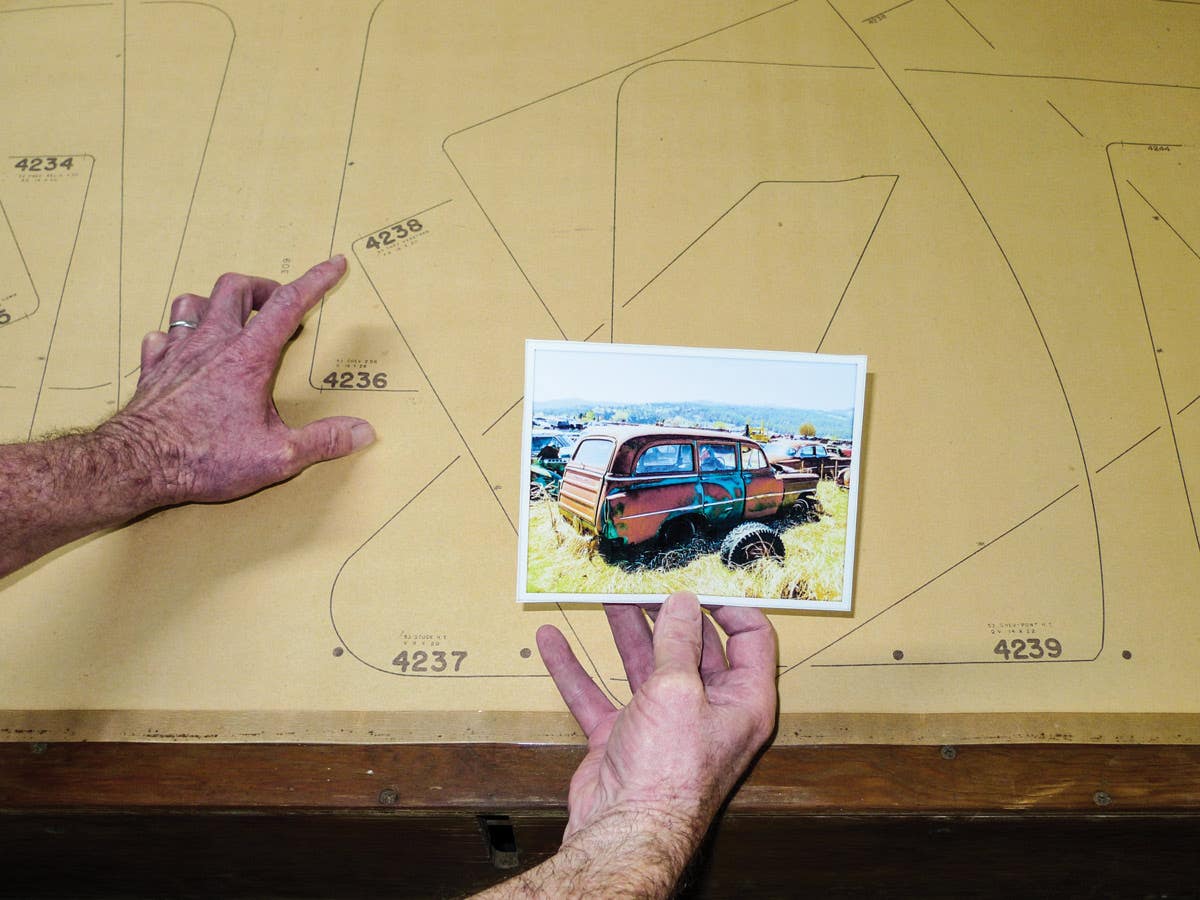Story and photos by John Gunnell
Eldon and Esta Hostetler’s 1909 Hudson will be featured at one
of two Hudson centennial events planned this year.
The 100th Anniversary of the Hudson Motor Car Co. will be celebrated this year. The Hudson Essex Terraplane Club, which is turning 50 years old, is planning a very special national meet to mark the occasion. The Hostetler Hudson Collection in Shipshewana, Ind., will also be holding a Hudson Homecoming. To make the homecoming special, the Hostetler collection’s 1909 Model 20 roadster — an example of the very first Hudson — was recently freshened up for a big year in Hudson history.
Hudson’s a hit
Hudson was organized in Detroit, Mich., where company backer J. L. Hudson ran a successful department store that was well-known throughout the city. Roy D. Chapin was elected president of the company and Howard Coffin was vice president. Things actually began rolling in 1908, with Hudson evolving out of another company called Chalmers-Detroit Motor Co.
Chapin and Coffin had worked together at Oldsmobile in Lansing. Chapin was a youthful 22-year-old man from a well-heeled Michigan family. He grew up in Lansing and went to the University of Michigan in Ann Arbor. Chapin developed a fascination with the automobile and the Lansing-built Olds, in particular. Coffin was a farmer’s son from Ohio who was seven years Chapin’s senior.
Both men had quit their college studies — Chapin left in 1901. He started working at Oldsmobile in February of that year. Coffin left college because he needed money and took a job offered by Olds in 1902. Chapin had already built a steam car and a gas engine.
Although he never earned his degree, Coffin studied engineering at the University of Michigan and figured that he knew enough to build a car. At Olds, he was given a drawing board and put to work doing just that. Chapin had started at the company machining transmission parts, but became a test driver and plant photographer. By 1904, he was the company’s sales manager. The following year, Coffin became Olds’ chief engineer.
Though America’s oldest automaker had launched into business with its famous curved-dash model — a small car — it then made a stab at big luxury cars in the 1905-1910 era. The Olds Limited, with its double-deck running boards, was a huge car, but it was also a rarity.
Still, the automaker was set on the luxury car track for awhile. When Coffin drew up a light car in 1906, the company elected not to make it. Chapin then sold the rights to E. R. Thomas, a Buffalo, N.Y., automaker who gave financial support to the new operation in Michigan. The car was built as the Thomas-Detroit. When Hugh Chalmers — the former manager of National Cash Register Co. — bought out E.R. Thomas’ controlling interest, the car morphed into the Chalmers-Detroit. By that time Chapin and Coffin were planning to move on and start a new venture making the car that became the Hudson 20.
Two other Oldsmobile alumni were enlisted to develop a light, 20-hp automobile that became the Hudson Model 20. Roscoe B. Jackson was a mechanical engineer and George W. Dunham had served as Olds’ chief engineer. Dunham designed the new car and Jackson helped finance it through his wife’s wealthy uncle, J.L. Hudson.
To manufacture this new car, Hudson and E-M-F first shared a factory where Northern Motor Car Co. operated until it went under. Then, in April of 1909, Hudson moved to a plant formerly run by Aerocar Motor Corp. This facility was perfect for producing the Model 20, a small, inexpensive car that gave the Model T a bit of a run for the money. The first Hudson was built on July 3, 1909.
A sturdy little buggy, perched on a 100-inch wheelbase, the Model 20 had a 198-cid Atlas L-head four with the cylinders cast in banks of two. It featured a splash lubrication system. Oil was circulated via a plunger pump and sight-feel oilers on the wooden dashboard. The connecting rods and crankshaft were both forged out of steel, while the three-speed gear box was encased in an aluminum housing. On later cars, a similar Buda engine was substituted.
The front suspension carried a drop-forged front axle on semi-elliptical leaf springs. A shaft carried power from the engine to the semi-floating rear axle and three-quarter elliptical springs were fitted at the rear.
Occupants of the two-passenger car were positioned at the far back, just ahead of the rear wheels. There was 31 inches of room in front of the driver and passenger, which added up to a comfortable seating position. On some Model 20s, a brass radiator shell was used while other cars had a painted shell.
Car buyers had the option of adding a rumble seat or a circular 25-gallon gas tank at the rear. Apparently, it depended on whether they wanted to go far or just have an extra friend. At the front, 32 x 3-inch tires were used and slightly wider 32 x 3-1/2-inch tires were fitted at the rear.
Though advertised as a large car, the Model 20 was the same size as a Model T Ford. However, it was heavier, sturdier and more durable. Ads described it as “A design of its own in every sense of the word.”
The price of the Model 20 was originally $900, with a later increase to $1,000. Available options for the car included an extra rumble seat, a high-tension Bosch magneto, larger clincher-type front tires (the same size used stock on the rear), two brands of quick-demountable rear tires and, over the course of time, several wheelbase and roadster body variations.
Finding a Hudson first
On Oct. 20, 1990, Eldon and Esta Hostetler went to an auction in Uncertain, Texas, where the car collection amassed by plane crash victim Sam Vaughn was being liquidated. Vaughn owned 151 cars, trucks and motorcycles that were mortgaged to his bank, but his only Hudson was one of the hard-to-find early Model 20 roadsters.
Hostetler, who purchased his first Hudson in 1940, began collecting Hudsons after marrying Esta and learning they shared a passion for the cars. They started their collection in 1983 and ultimately put together the largest and most diverse assortment of Hudson and related vehicles ever seen. Today, the cars are showcased as part of a community-owned car collection and museum in the Shipshewana, Ind., Town Center.
According to Hostetler, Vaughn purchased the little Hudson from the Imperial Palace Auto Collection in Las Vegas, Nev. Richie Clyne, of the Imperial Palace, had purchased the car at one of three dispersal sales at Harrah’s Automobile Collection. The car was restored in the Imperial Palace restoration shop before it was sold to Vaughn in 1988.
Eldon Hostetler remembers waiting until the second day of the three-day sale for the car to cross the auction block.
“I was able to purchase it for the money I had in mind,” he says. “This added a very important car to my Hudson collection.”
The apple green-colored roadster is sure to put in an appearance at the Hudson Homecoming, being held at the Town Center in Shipshewana, Ind., on May 14-15, 2009.
The event will kick off with a cruise-in at the Essen Haus in Middlebury, Ind., on May 14. Events planned for Friday include a “Hudson Hundreth” celebration, the Heartland Tour, a cruise-in, a barbeque and ice cream social, music and nighttime movie screenings. On Saturday, there will be a Hudson Car Parade and a celebration banquet with a mystery guest. Information about the event is available by calling 260-768-3021, or e-mailing hgayheart@shipshewanatowncenter.com.
Two months later, a big celebration featuring Hudsons from 1909 to 1957 models will kick off when members of the Hudson Essex Terraplane Club (HET) convene for the organization’s 50th National Meet in Detroit, where the Hudson brand started 100 years earlier. The July 13-17 event will feature a long list of attractions, including a historic tour to the original Hudson plant. Information about the 50th Annual HET Meet and Hudson Motor Car Centennial is available from Ken Poynter at 313-408-3775 or kpcruisin@comcast.net.



